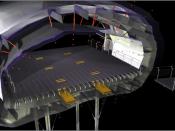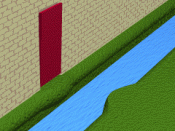Kinetic art and architecture lies in creating spaces and objects that can physically re-configure themselves to meet changing needs in which an adaptable architecture or artwork is formed. At this intersection there exists an unexplored physical architecture tuned to address today's dynamic, flexible and constantly changing needs. Kinetic design depends on motion for its effects. Since the early twentieth century artists and architects alike have been incorporating movement into design partly to explore the possibilities of movement, partly to introduce the element of time, partly to reflect the importance of the machine and technology in the modern world, and partly to explore the nature of vision. In this way, movement has either been produced mechanically by motors or by exploiting the movements of people, air, water, and other kinetic forces in space.
Kinetic architecture relies on the design of buildings in which transformative and mechanized structures are aimed at the changing shape of buildings so as to match the needs of people inside and adapt to the elements on the outside.
While a considerable amount of time and effort has been spent on "intelligent homes" in recent years, the emphasis has now shifted mainly on developing computerized systems and electronics to adapt the interior of the building or its rooms to the needs of its residents, while at the same time responding and adapting to its external surroundings and communicating to the outside world (Anshuman 23-27). Michael Fox states, "if a building could mediate our needs and the environment outside: Its demand on physical resources could be slashed. If it would transform to facilitate multi-uses: its function would be optimized. If a building could adapt to our desires: it would shape our experience" (Fox 32). Research in this area, also known as responsive architecture, however, falls heavily under the...


